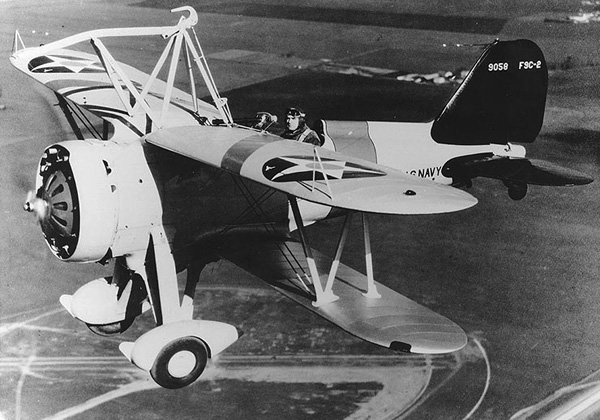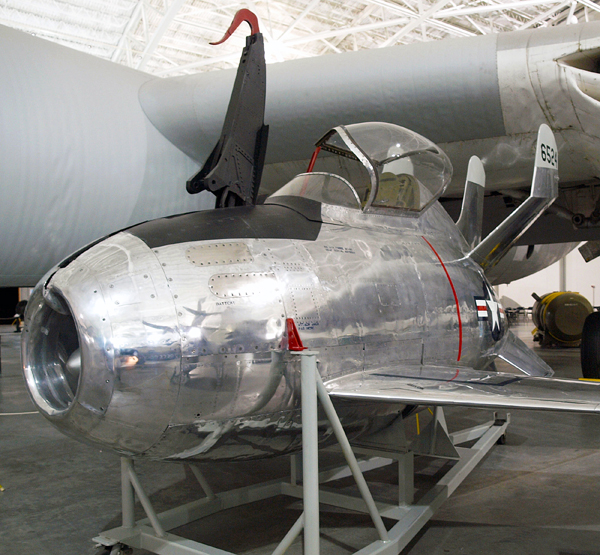Parasite Airplanes
Today, parasite airplanes. The University of Houston's College of Engineering presents this series about the machines that make our civilization run, and the people whose ingenuity created them.
Nobody blinks when they see a small boat being carried by a large one -- lifeboats, whaleboats, dinghies. And we often see Rec-Vecs towing small automobiles. But an airplane riding in another airplane -- well somehow that's another matter. Yet such hitchhikers are a tradition as old as the airplane itself. They're call parasites. When airplanes first appeared, we already had dirigibles. People immediately imagined those great whales in the sky carrying little lifeboat airplanes.
But the first parasite airplane did not ride on a dirigible. Rather, the British put a Bristol Scout on the upper wing of a huge biplane bomber, built for the express purpose of carrying it. That system was tried once, in 1916, then abandoned. Two years later, the British did use their 23R Dirigible to carry a Sopwith Camel pursuit plane. It dangled below the 535-foot monster. The dirigible released one of those airplanes on three occasions. The system seemed to work, but it was clumsy. And it was never put to any use.
Between wars, Curtiss built his Sparrowhawk, a parasite airplane for the US Navy. It was a small biplane that flew from the US dirigible Macon. Its landing gear could be removed if it were meant to return to roost in the dirigible's pick-up sling. And yet the pretty little Sparrowhawk never served as much more than disposable ballast. Anyway, the Macon soon perished in a crash

The Curtiss F9C Sparrowhawk in flight (Image courtesy of Wikimedia Commons)
I recently visited the Strategic Air Command Museum outside of Omaha where I gained some clue as to how this compelling idea refused to give up. There, in the shadow of the monster B-36 Bomber that once carried it, I found myself staring at the strangest airplane I'd ever seen. The McDonnell Goblin was a stumpy little jet fighter with no landing gear.

The Mcdonnell XF-85 Goblin at the Strategic Air and Space Museum in Nebraska. Notice a bit of the wing and fuselage of the B-36 Bomber behind it. (photo by John Lienhard)
The ten-engine, 230-foot wingspan B-36 could carry three Goblins. Yet this idea joined the others on the scrap heap of dreams. Returning to the mother ship was too tricky. What's more, that strange, specialized airplane performed rather badly.
We tried other parasite schemes with our big bombers. Then air-to-air refueling became practical. It gave fighter support the range it needed. So that strange Goblin jet was a last gasp of an idea that seemed as though it really ought to work.
Of course, if any idea can be made to work, engineers will make it work. It can be only a matter of time before someone finds the right configuration of engineering design and human need. Maybe it will be escape pods for our space vehicles. By the way, when the Shuttle rides on a 747, that's not a true parasite; it's just cargo. The Shuttle cannot fly off on its own.
Maybe we doomed this idea when we gave it such a nasty name. Parasites indeed! Let's call them pet airplanes or maybe aerial children. Maybe that will be the way we'll finally make this strange idea work.
I'm John Lienhard at the University of Houston, where we're interested in the way inventive minds work.
For more on Parasite airplanes and some of the forms they take, see the Wikipedia pages on Parasite Aircraft, Airborne aircraft carrier, 23 class airship, and the McDonnell XF-85 Goblin. Notice that I have not included in the discussion, the use of an airplane as a launch vehicle for, say, an experimental hypersonic airplane. See also, the Vector Site article on Parasite airplanes.